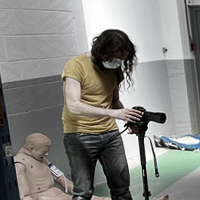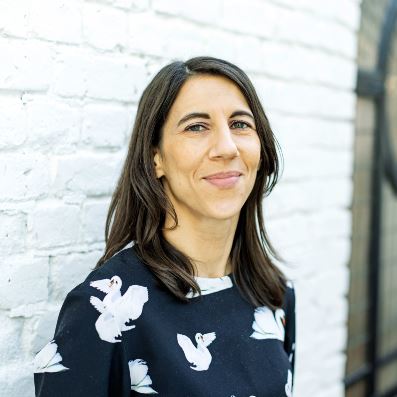FMD Immersive Learning Lab

The use of virtual reality (VR), augmented reality (AR), mixed reality (MR) and extended reality (XR) in Higher Education is transforming the learning landscape. These technologies can be especially impactful in Medicine and Dentistry, where the ability to simulate complex, real-world scenarios can enhance student learning.
The FMD Immersive Learning Lab was established in 2024 as a central hub across the Faculty to explore the potential of these technologies for teaching, learning and assessment (see this paper for further detail). Within this emergent, lab environment, the Institute of Health Sciences Education (IHSE) and Institute of Dentistry (IoD) will continue to pioneer, while the Digital Education Studio led by Professor Chie Adachi, Dean for Digital Education, provides oversight and alignment with the Faculty’s digital education strategy.
Here's how these technologies are reshaping higher education and how the Lab is exploring their potential:
- Immersive Learning Environments: VR and AR create simulated environments that are ideal for training students in practical, high-stakes tasks in a risk-free setting. For example, medical and dental students can perform virtual surgeries or explore human anatomy in three dimensions, gaining experience without the ethical concerns or the irreversible consequences of mistakes on real patients (Kyaw et al., 2019).
- Enhanced Engagement and Retention: Immersive technologies are known to increase student engagement by making learning experiences more interactive and engaging. The sensory involvement in a virtual environment helps with better retention of information and concepts compared to traditional learning methods. Educational research indicates that these technologies can enhance confidence, knowledge acquisition, and retention, alongside skills such as problem-solving and critical thinking (Radianti et al., 2020).
- Social Learning in the Metaverse: The concept of the Metaverse offers new avenues for social learning, where students can interact with peers and instructors in a virtual space. This can be particularly beneficial for distance learning, creating a sense of community and collaboration among students who might otherwise feel isolated (Bower, Lee and Dalgarno, 2016).
- Real-Time Feedback and Adaptation: These technologies allow for immediate feedback and adaptive learning paths for students. In a VR setting, software can analyse student performance in real time and adjust the difficulty or offer customized tips, enhancing the learning process (Jensen and Konradsen, 2017).
Direction of travel
Our goal is to establish the FMD Immersive Learning Lab as the cornerstone for developing an integrated ecosystem of immersive learning technologies, strongly supported by proven digital pedagogy principles. This initiative will create a central hub within the Faculty dedicated to nurturing a collaborative and innovative environment.
This coordinated effort between IHSE, IoD and DES will focus on three primary areas aligned with the Faculty’s strategy, over three years: enhancing pedagogical practices, advancing technology use, and streamlining operations.
Research and examples of good practice at FMD are helping us identify the best potential uses for teaching, learning and assessment; we are also scanning the market and possible developments coming in the next few years to inform our approach to the technology and supporting several projects and pilots, while planning future ones.
Current work
There are several ongoing projects and available simulated and immersive learning materials in use at the Institute of Dentistry and the IHSE. Below are a few examples.
Institute of Dentistry
Immersify Dental
An AR app which helps dental students develop clinical skills outside of the clinic, using their phones or tablets. These interactive materials are aligned with the BDS and BSc Oral Health curricula and GDC learning outcomes. Content is designed by dental experts to supplement traditional delivery with interactive elements.
CenarioVR
CenarioVR is being used at the Institute to create VR, 360-degree videos for scenario-based learning. Students, for example, navigate a virtual clinic and choose what scenario to engage with and skills to develop: patient/dentist communication skills, use of dental instruments, clinical dental bay set up, etc.
TINALP
This MR project is taking its first steps and aims for the creation of interactive materials students can explore on their own devices or using VR headsets.
Teaching staff will create interactive materials adding slides, videos, audio, images and most importantly SRT files (3D models), either from intra oral scanners, dental CAD software, 3d printers, 3d software or Haptic dental and interact within Mixed Reality (MR) - via a HoloLens, and a web app. Students in class, using VR headsets, or at home with their own devices, can interact with 3D models and the holographic content, as well as the use of a mirror screen to allow all the others in the classroom to enjoy the mixed reality experience, for example, to “peel” the layers from the tooth to see the internal features (from enamel to bone), zooming in and out on content and features, adding labels, etc.
IHSE
Edify
Funded by the Principal and President grant (£20K), this is a year long project to pilot Edify/VR for MBBS and Chemistry as a comparative study, in developing practical skills. Educators can create and share lessons and immersive learning content with students across desktop, mobile, and virtual reality. The project at IHSE is in preparation to launch next academic year and aims to create virtual OSCE sessions for students to practice.
Oxford Medical Simulation
The platform presents immersive VR simulations in-headset or on-screen, and students can engage individually or collaboratively and develop skills in clinical scenarios: prioritisation, delegation, communication, motor skills and task-switching, for example.
Meet the team
Executive sponsors
Project team
-

Dr Pedro Elston - Head of Innovation and Learning (IHSE)
-

Ben Audsley - eLearning Resource Manager (IoD)
-
.png)
Jorge Freire - DES Senior Learning Designer
-
-300x300.png)
Violet Chan – DES Digital Education Support Officer
-

Michele Dessi – E-learning And Media Manager
Blizard Institute Of Cell And Molecular Science -

Elise Omfalos
Innovation and Learning Manager -

Surjit Uppal
Head of Technology Enhanced Learning -

Daniel Pedrosa
Multimedia Producer
We invite all members of our community to stay engaged as we embark on this exciting journey, shaping the future of educational technology and learning within our institution.
Get involved
If you would like to know more about what’s happening in this Immersive Learning Lab, or if you would like to get involved, please contact Digital Education Studio (digitaleducationstudio@qmul.ac.uk)
References
Bower, M., Lee, M. J., & Dalgarno, B. (2017). Collaborative learning across physical and virtual worlds: Factors supporting and constraining learners in a blended reality environment. British Journal of Educational Technology, 48(2), 407-430.
Freina, L., & Ott, M. (2015). A literature review on immersive virtual reality in education: State of the art and perspectives. In The International Scientific Conference eLearning and Software for Education (Vol. 1, pp. 133-141)
Jensen, L., & Konradsen, F. (2018). A review of the use of virtual reality head-mounted displays in education and training. Education and Information Technologies, 23(4), 1515-1529.
Kyaw, B. M., Saxena, N., Posadzki, P., Vseteckova, J., Nikolaou, C. K., George, P. P., ... & Car, L. T. (2019). Virtual reality for health professions education: Systematic review and meta-analysis by the digital health education collaboration. Journal of Medical Internet Research, 21(1), e12959.
Radianti, J., Majchrzak, T. A., Fromm, J., & Wohlgenannt, I. (2020). A systematic review of immersive virtual reality applications for higher education: Design elements, lessons learned, and research agenda. Computers & Education, 147, 103778.



